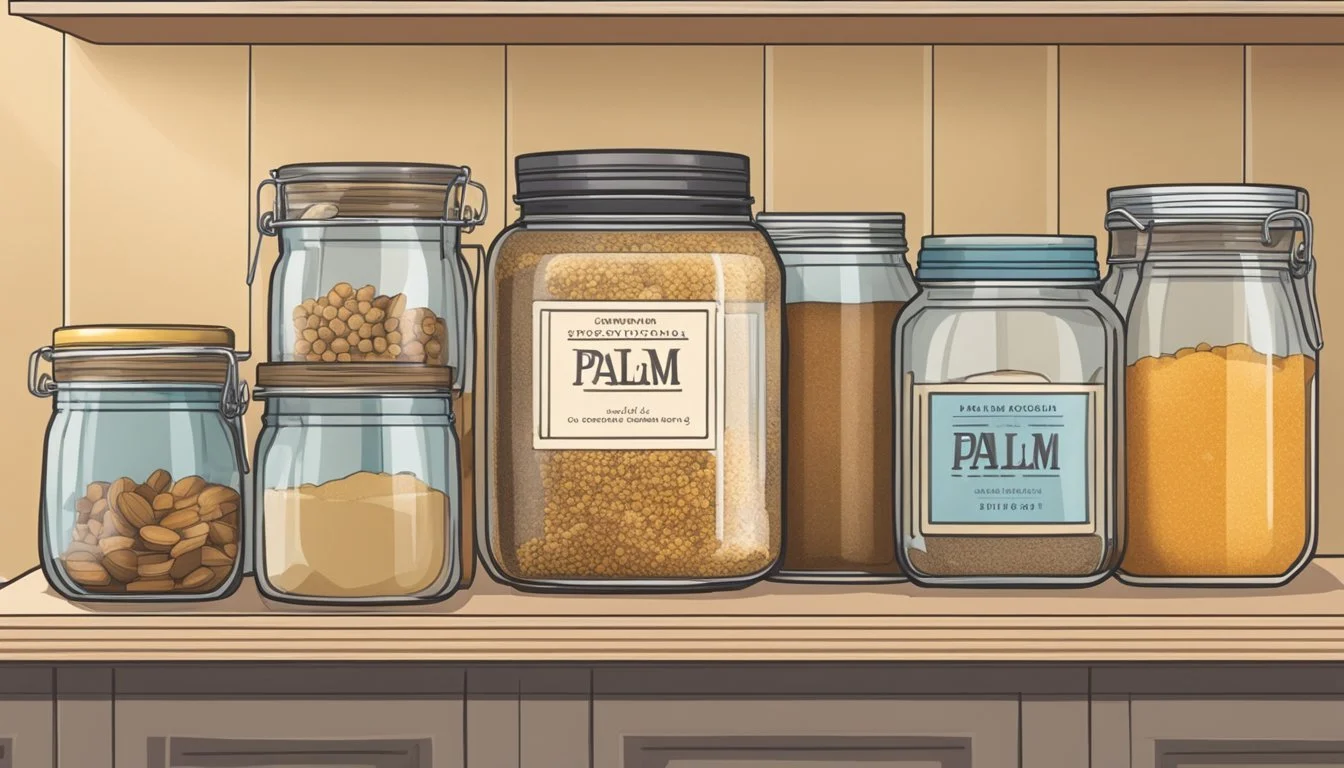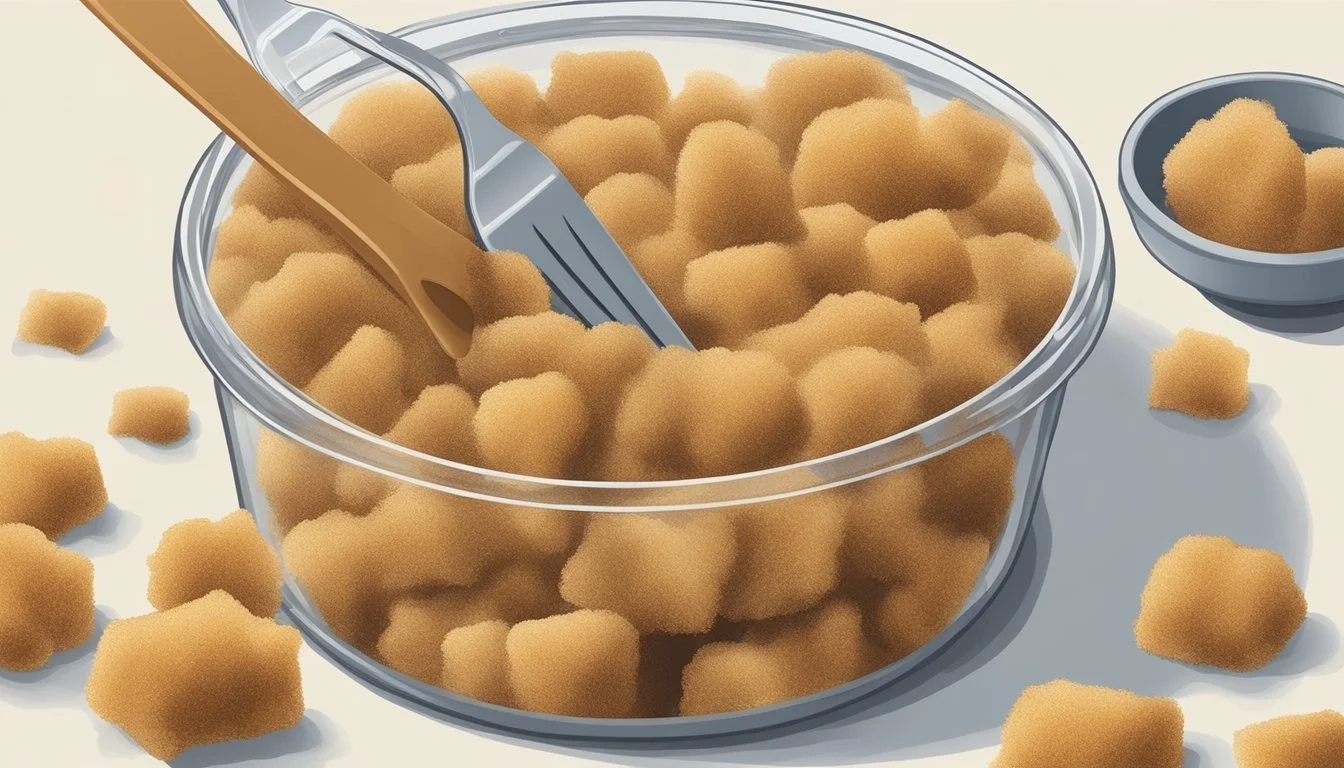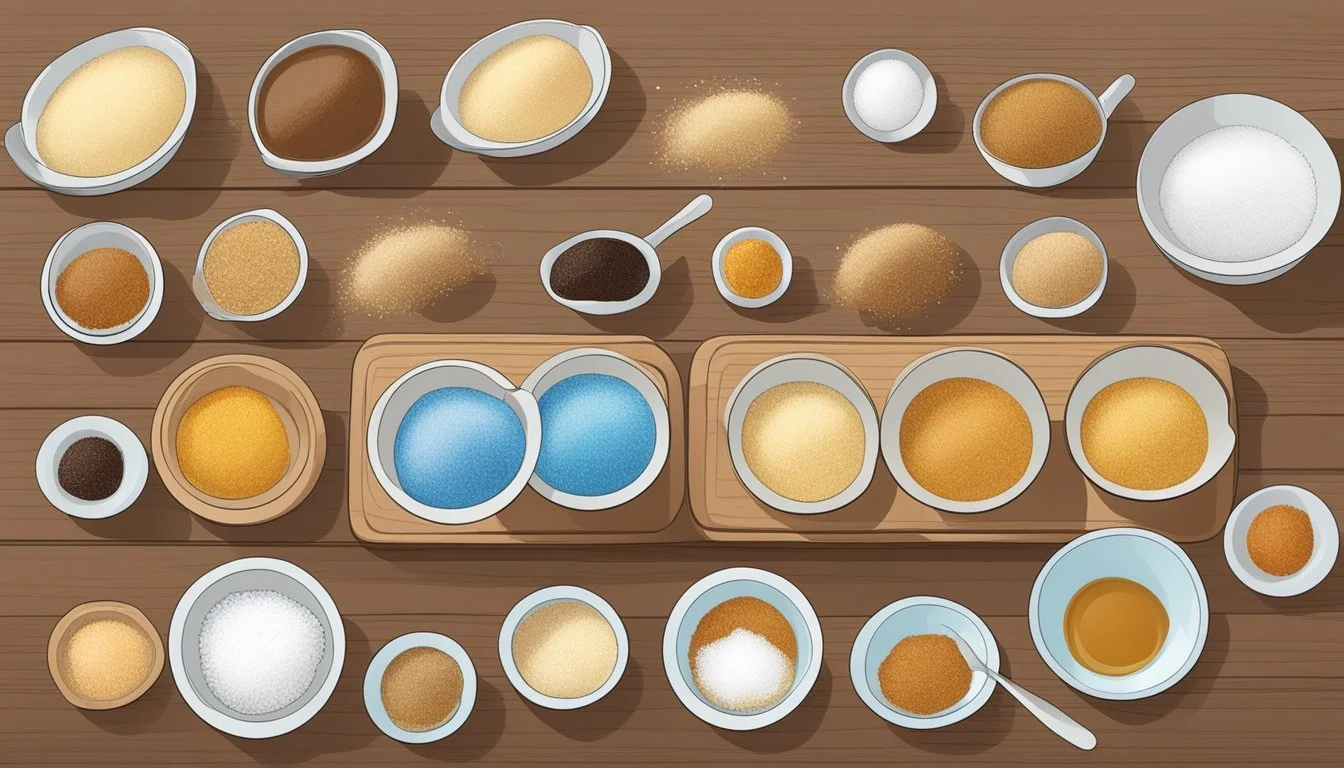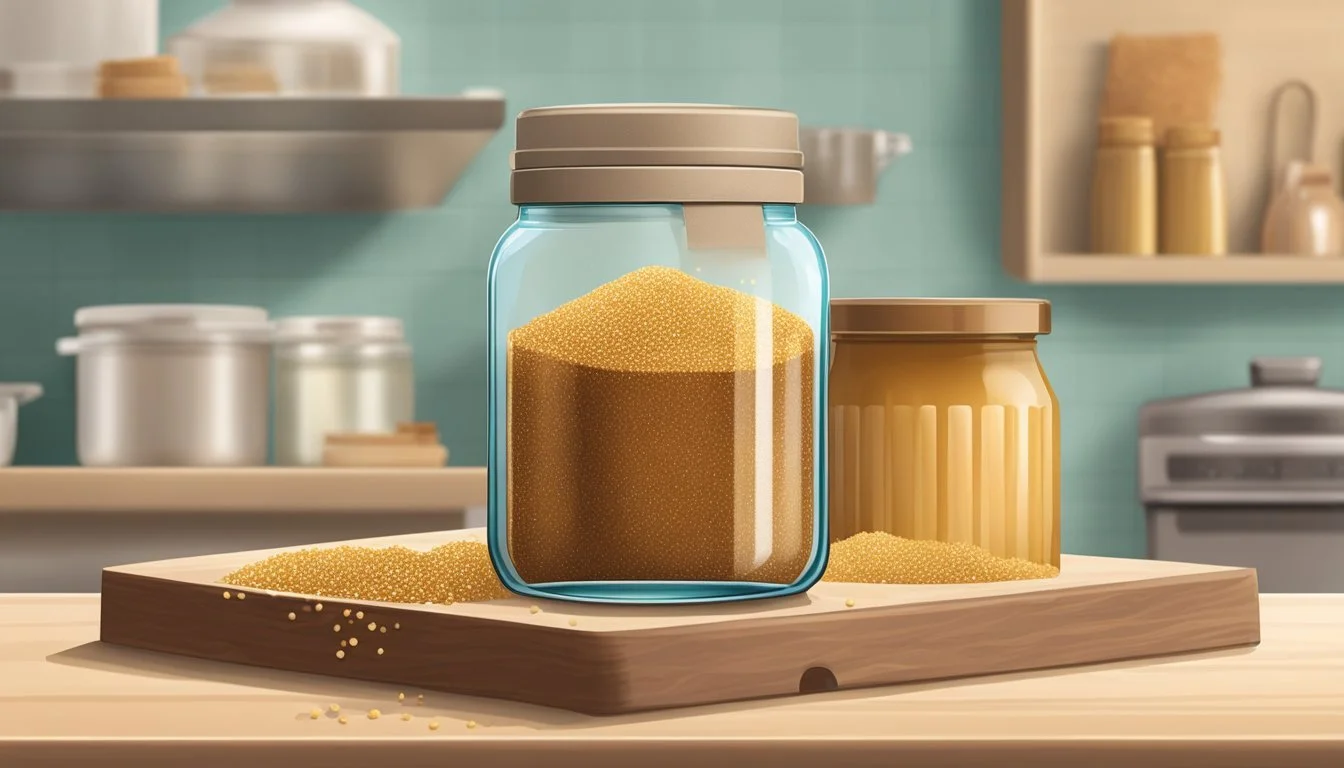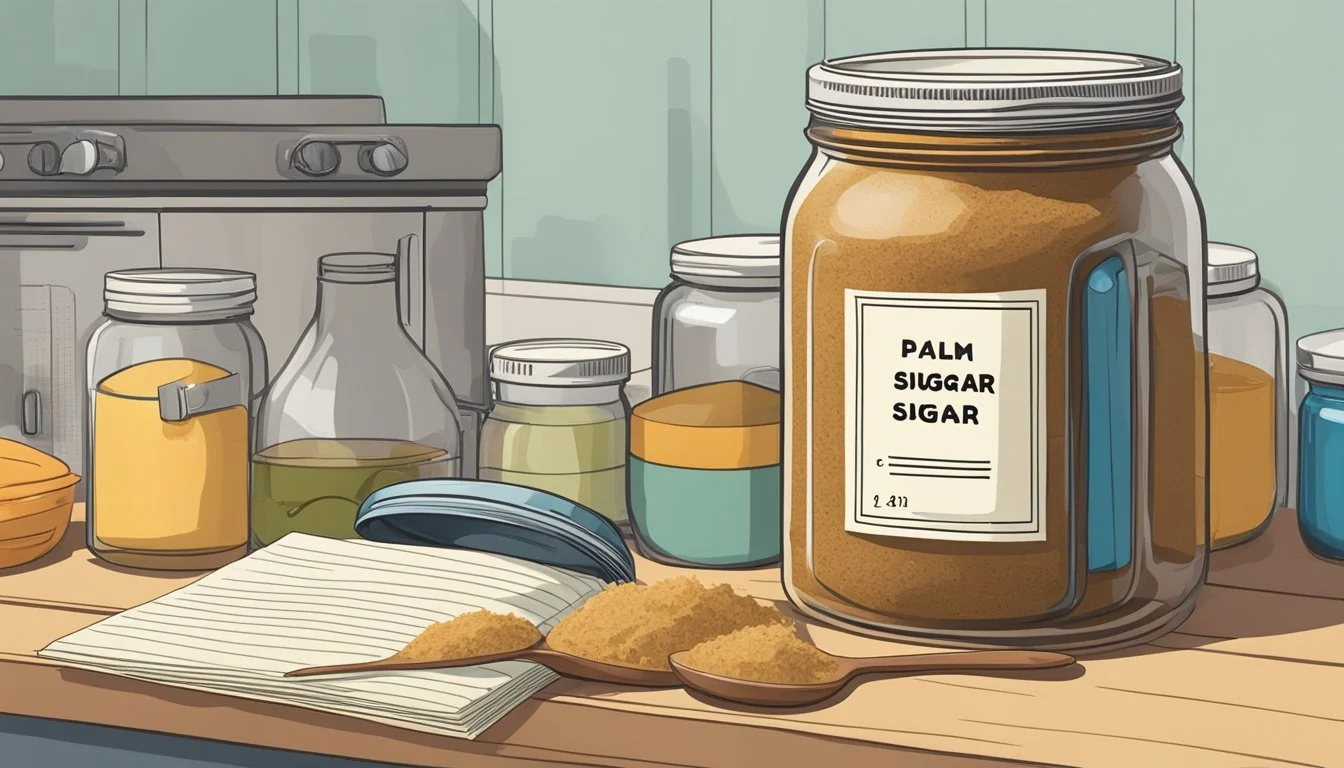Does Palm Sugar Go Bad?
Storage Tips and Shelf Life
Palm sugar, a natural sweetener, is known for its unique flavor and potential health benefits. Many people wonder, does palm sugar go bad? The straightforward answer is that, while palm sugar doesn't spoil like perishable items, it can harden or lose some of its delicate taste nuances over time if not stored correctly.
In terms of shelf life, palm sugar typically maintains its quality for up to two years when kept in a cool, dry place. Proper storage, like placing it in an airtight container, can help preserve its texture and flavor. Even if it hardens, it remains usable and can still impart its characteristic sweetness to dishes.
Palm sugar is prized not only for its flavor but also for its nutritional profile. It contains essential minerals like potassium and iron, making it a healthier option compared to refined sugar. This makes palm sugar a favored choice for those looking to enhance their diet with natural sweeteners.
Understanding Palm Sugar
Palm sugar, a natural sweetener, is derived from the sap of specific palm trees and is noted for its minimal processing and the presence of beneficial nutrients. This section details its origins, nutritional profile, health benefits, and culinary applications.
Origins and Production
Palm sugar is extracted from the sap of various palm trees, such as the coconut palm, date palm, and sugar palm. The process involves cutting the flower buds of the palm tree to collect the sap. This sap is then boiled until it thickens, producing a rich, caramel-colored sugar.
The type of palm tree used can impact the flavor and texture of the sugar. Coconut palm and Arenga palm are two popular sources. In some regions, traditional methods are still used, maintaining its status as an unrefined sweetener.
Nutritional Content
Palm sugar is valued for its nutrient profile, which includes minerals such as potassium, magnesium, zinc, and iron. It also contains vitamins like B1, B2, B3, and B6. These nutrients make palm sugar a preferable option for those looking for less processed sweeteners.
Palm sugar contains around 15 calories and 3 grams of sugar per teaspoon. The sucrose content is relatively low, about 3-9%, compared to cane sugar. Despite these benefits, it’s essential to consume it in moderation due to its caloric content.
Health Benefits
One notable health benefit of palm sugar is its low glycemic index (GI), which means it causes a slower rise in blood glucose levels. This makes it suitable for individuals managing blood sugar levels. For instance, palm sugar derived from Arenga pinnata has a GI of roughly 40 ± 3.
Additionally, due to its unrefined nature, palm sugar retains more of the natural nutrients found in the palm sap. These nutrients can contribute to improved health outcomes when compared to more refined sugar options.
Culinary Uses
Palm sugar offers a versatile addition to many culinary creations. Its unique, caramel-like flavor enhances both sweet and savory dishes. Commonly used in Southeast Asian cuisines, palm sugar is found in recipes for curries, desserts, and marinades.
In baking, it can serve as a substitute for brown sugar, maintaining a 1:1 ratio but with a richer flavor profile. It is ideal for sauces, glazes, and confections where a deep, complex sweetness is desired.
Shelf Life and Storage
Palm sugar, when stored correctly, can maintain its quality for an extended period. Proper storage conditions and understanding factors that affect its shelf life are crucial to ensuring its longevity.
Proper Storage Conditions
Palm sugar should be stored in an airtight container to prevent moisture intrusion, which can cause it to clump and degrade in quality. The preferable storage environment is a cool and dry place, such as a pantry or kitchen cabinet, to keep it away from heat and humidity.
Moisture is the primary threat to palm sugar, so ensuring the lid is tightly sealed after each use is essential. If stored correctly, palm sugar can remain fresh and maintain its taste for a long time.
Factors Affecting Shelf Life
Several factors can affect the shelf life of palm sugar. Moisture and exposure to air are the most significant, leading to clumping and reduced quality. The presence of heat can also speed up the degradation process, causing the sugar to lose its flavor and texture.
Storing palm sugar in a dry environment and using an airtight container can mitigate these risks. Avoid placing it near stove tops or ovens where temperature fluctuations are common.
Expiration and Best Before Date
Palm sugar typically does not spoil in the conventional sense but can degrade in quality over time. Most manufacturers provide a best before date, which indicates the period during which the product is expected to retain its best flavor and quality.
While palm sugar can last beyond this date if stored properly, it is recommended to consume it within this timeframe for optimal taste. If noticeable changes in smell or texture occur, it may be best to replace it, even though it technically might not be expired.
Recognizing Signs of Spoilage
Palm sugar, like many sweeteners, can degrade over time. Key signs of spoilage include changes in texture and color, alterations in odor and taste, and the presence of mold or insects.
Changes in Texture and Color
A notable indicator of spoilage in palm sugar is a shift in texture. Lumps or clumps can form when the sugar hardens over time due to moisture exposure. This hardening doesn't mean it's inedible but may signal decreased quality.
Color changes are another sign. Palm sugar should maintain a consistent brown hue. If the sugar becomes significantly darker or lighter, it might suggest degradation. Expired sugar may also appear more uneven in color.
Odor and Taste Alterations
Odor is a critical factor in determining the freshness of palm sugar. Fresh palm sugar has a sweet, caramel-like smell. When it goes bad, it may emit an off smell or rancid odor; this is an indication it has absorbed unwanted moisture or bacteria.
The taste of expired sugar can also change. From a rich sweetness to a more muted or unpleasant flavor, alterations can help identify whether it should be discarded. Always trust your senses, as an odd taste usually signals a health risk.
Presence of Mold and Insects
Mold is a strong indicator that palm sugar has spoiled. White or green spots on the sugar surface indicate mold growth. Mold in food can lead to foodborne illness and should be avoided at all costs.
Insect contamination is another clear sign. Insects, such as ants or pantry bugs, can infest improperly stored palm sugar. Presence of these pests indicates the sugar has been compromised and should be thrown away to avoid health risks.
Understanding these signs helps ensure that palm sugar remains safe and enjoyable to consume. Proper storage, in airtight containers, can prevent many of these spoilage issues.
Preventing and Handling Clumped Sugar
Proper storage and timely intervention can maintain sugar's quality and prevent clumps. Various methods can restore clumped sugar, offering practical solutions for everyday use.
Restorative Techniques
When sugar hardens, a few home techniques can help return it to its original form. One effective method involves using a microwave. Place the clumped sugar in a microwave-safe container, cover it with a damp paper towel, and heat on low for 20-30 seconds. Stir and break up the clumps, repeating as necessary until the sugar is soft again.
Another approach uses an oven. Preheat to the lowest setting (150-200°F). Spread the clumped sugar on a baking sheet and heat for around 15 minutes, tapping with a spoon to check progress. Once the sugar begins to loosen, turn off the oven and let the sugar cool gradually. This method avoids overheating, which can alter the sugar's texture.
Food processors also serve as a quick fix for breaking up larger clumps. Pulse the sugar in short bursts until it returns to its granular state. Be mindful to avoid over-processing, as this can produce sugar powder.
Preventative Measures
Preventing sugar from clumping starts with proper storage. Use airtight containers to minimize exposure to air and moisture, both common culprits in sugar hardening. Store these containers in a cool, dry place to maintain the sugar’s quality.
Another preventive method is adding a slice of bread or a few sugar cubes to the container. These act as moisture absorbers, keeping the sugar dry and free-flowing. Similarly, a small amount of corn starch mixed with the sugar can deter clumping by absorbing any excess moisture.
Freezing sugar can also preserve its consistency. Portion out the sugar into freezer-safe bags and remove air before sealing. When needed, thaw and use as usual; this method prevents clumping irrespective of humidity levels.
Sugar in Cooking and Baking
Sugar plays a crucial role in various culinary applications, influencing aspects such as flavor, texture, and color in both cooking and baking. Different types of sugars can be used interchangeably or as substitutes to achieve specific results.
Sugar's Role in Recipes
Sugar, whether in baking or cooking, primarily serves as a sweetener. In baking, it also helps with browning, moisture retention, and leavening.
Different sugars like granulated sugar, brown sugar, and coconut sugar impart unique flavors and textures. For instance, brown sugar adds a rich molasses flavor and chewier texture to cookies.
In cooking, sugar helps to create balanced flavors in savory dishes. It can be used to caramelize vegetables or enhance sauces, providing a complex, sweet undertone.
Substitutes for Palm Sugar
When palm sugar is unavailable, substitutes can be used without compromising the dish's flavor.
Coconut sugar is the closest substitute, offering a similar caramel-like flavor. Brown sugar is another alternative, though it's slightly more moist and less nuanced in flavor.
For liquid options, honey and maple syrup can replace palm sugar in recipes where moisture content needs to be considered. Each substitute brings its own set of characteristics, so adjustments may be required to achieve the desired texture and sweetness.
Comparing Palm Sugar with Other Sugars
Palm sugar offers unique nutritional and flavor characteristics compared to other common sugars like white granulated sugar, brown sugar, and raw sugar. Its lower glycemic index and distinct taste profile make it a notable alternative.
Nutritional Differences
Palm sugar is often praised for its minimal processing and the presence of beneficial nutrients. It contains minerals such as potassium, magnesium, and zinc. In contrast, white granulated sugar is highly refined and lacks these nutrients. Brown sugar, while containing slightly more minerals than white sugar, still is not as nutrient-dense as palm sugar.
Sucrose content also varies. Palm sugar has a lower sucrose percentage (3-9%) compared to cane sugar, which is about 50% sucrose. This makes palm sugar potentially a healthier alternative with less impact on blood glucose levels. Additionally, palm sugar exhibits a lower glycemic index, around 40, compared to other sugars, aiding in better blood sugar management.
Coconut palm sugar, a type of palm sugar, also contains inulin, a type of dietary fiber beneficial for gut health.
Flavor Profiles and Culinary Applications
Palm sugar has a distinctive flavor often described as rich and caramel-like with earthy undertones. This makes it suitable for both sweet and savory dishes. It enhances the taste of desserts, marinades, and even beverages.
In comparison, white granulated sugar is known for its pure sweetness without added flavors, often used for baking and sweetening drinks. Brown sugar has a molasses content that gives it a deeper flavor suitable for baked goods and sauces. Raw sugar, being less processed, has a slightly more complex flavor than white sugar but is still primarily sweet.
Palm sugar’s unique flavor can add complexity to dishes. Chefs often prefer it for its natural sweetener qualities, offering both sweetness and depth of flavor.
Health Considerations and Benefits
Palm sugar offers several health benefits that make it an appealing alternative to regular sugar. It features a low glycemic index, contains beneficial minerals, and can fit into a balanced diet.
Glycemic Index of Palm Sugar
Palm sugar has a low glycemic index (GI), typically ranging between 35 and 41. This means it causes a slower rise in blood glucose levels compared to higher-GI sweeteners. People with diabetes or those managing their blood sugar levels benefit from this feature. Lower GI foods are also linked to reduced risk of heart disease and better weight management. The minimal processing of palm sugar helps retain its natural properties, keeping its GI low.
Mineral Content and Health Effects
Palm sugar is rich in essential minerals such as potassium, zinc, iron, and magnesium. For example, a 100-gram serving contains approximately 331.5 mg of potassium. These minerals support various bodily functions. Potassium helps regulate blood pressure, magnesium supports muscle and nerve function, zinc enhances immune system functions, and iron is crucial for oxygen transport. Inulin, a type of fiber present in palm sugar, promotes digestive health and improves gut bacteria balance.
Palm Sugar in a Balanced Diet
Incorporating palm sugar into a balanced diet can be beneficial due to its nutritional value. It contains negligible fat and provides a moderate amount of carbohydrates, making it a source of quick energy. While it includes 15 grams of sugar per tablespoon, the natural sweetness enables usage in smaller quantities. Palm sugar can be a healthier alternative to refined sugars in baking, beverages, and cooking. It aligns well with dietary guidelines that recommend reducing free sugar intake for optimal health.
Preserving Sugar and Sweeteners
Preserving sugar and sweeteners involves practices that ensure they remain fresh, prevent spoilage, and retain their quality. Understanding storage solutions and the role of palm sugar in preservation can help maintain the longevity and effectiveness of these products.
Long-Term Storage Solutions
For optimal storage, sugars and sweeteners should be kept in airtight containers. This prevents moisture, which can lead to clumping or mold in hygroscopic substances like sugar. Storing these containers in a cool, dry place, such as a pantry, enhances their longevity.
Using refrigeration is generally not recommended for most sugars, although it can help certain sweeteners. The fridge can cause condensation, leading to moisture issues. However, refrigeration may extend the shelf life of liquid sweeteners like maple syrup. Always check for any changes in odor or appearance to avoid potential food poisoning hazards.
Palm Sugar's Role in Preservatives
Palm sugar, derived from the sap of various palm trees, is minimally processed, retaining natural preservatives. It's used in making jams and jellies, providing a unique flavor and adequate preservation. Due to its minerals and vitamins, palm sugar also acts as a natural preservative in other food items.
When storing palm sugar, it's crucial to keep it in airtight containers to avoid moisture intrusion. This storage method helps maintain its quality and prevent hardening. Properly stored, palm sugar can last for an extended period without significant quality degradation.
Practical Tips for Sugar Management
Managing palm sugar effectively involves maintaining its freshness and recognizing signs when it goes bad. By paying attention to storage conditions and changes in appearance or smell, one can ensure the sugar remains in good condition.
Maintaining Freshness
Store palm sugar in a cool, dry place, ideally in the pantry, to extend its shelf life. Use airtight containers to keep out moisture and prevent hardening. Avoid exposing the sugar to direct sunlight, which can degrade its quality. For long-term storage, consider dividing the sugar into smaller portions and sealing each portion separately. This method minimizes exposure to air each time you use the sugar, preserving its flavor and nutritional content.
How to Tell If Sugar Is Bad
Detect bad palm sugar by looking for off odors or noticeable changes in its appearance. If the sugar has a sour or moldy smell, it's best to discard it. Also, look for any signs of discoloration or clumping, which can indicate spoilage. Unlike perishable items, palm sugar doesn't spoil quickly, but these signs should not be ignored to ensure safety and quality. Checking the sugar regularly, especially if it's been stored for a while, can help maintain its freshness.


